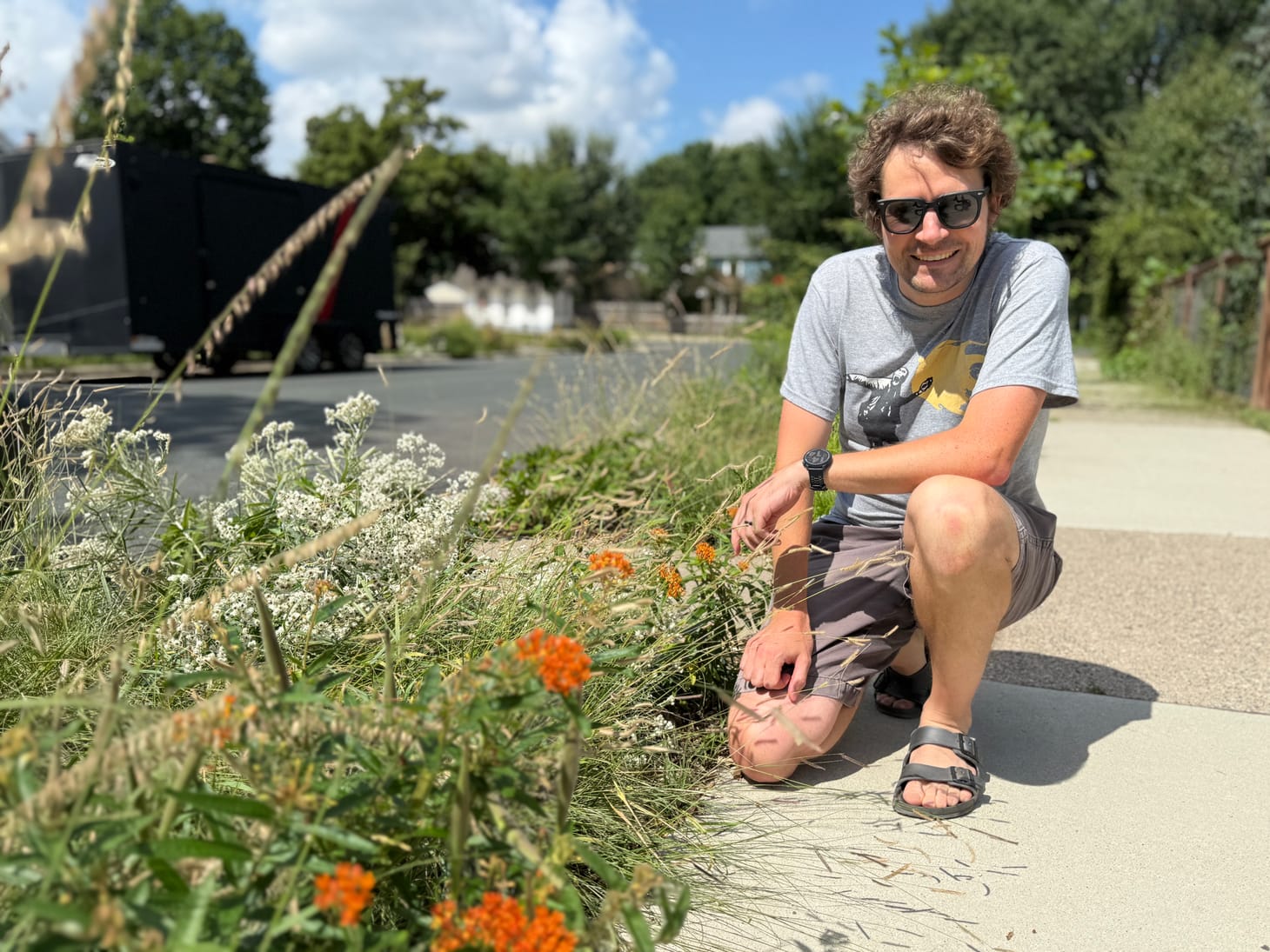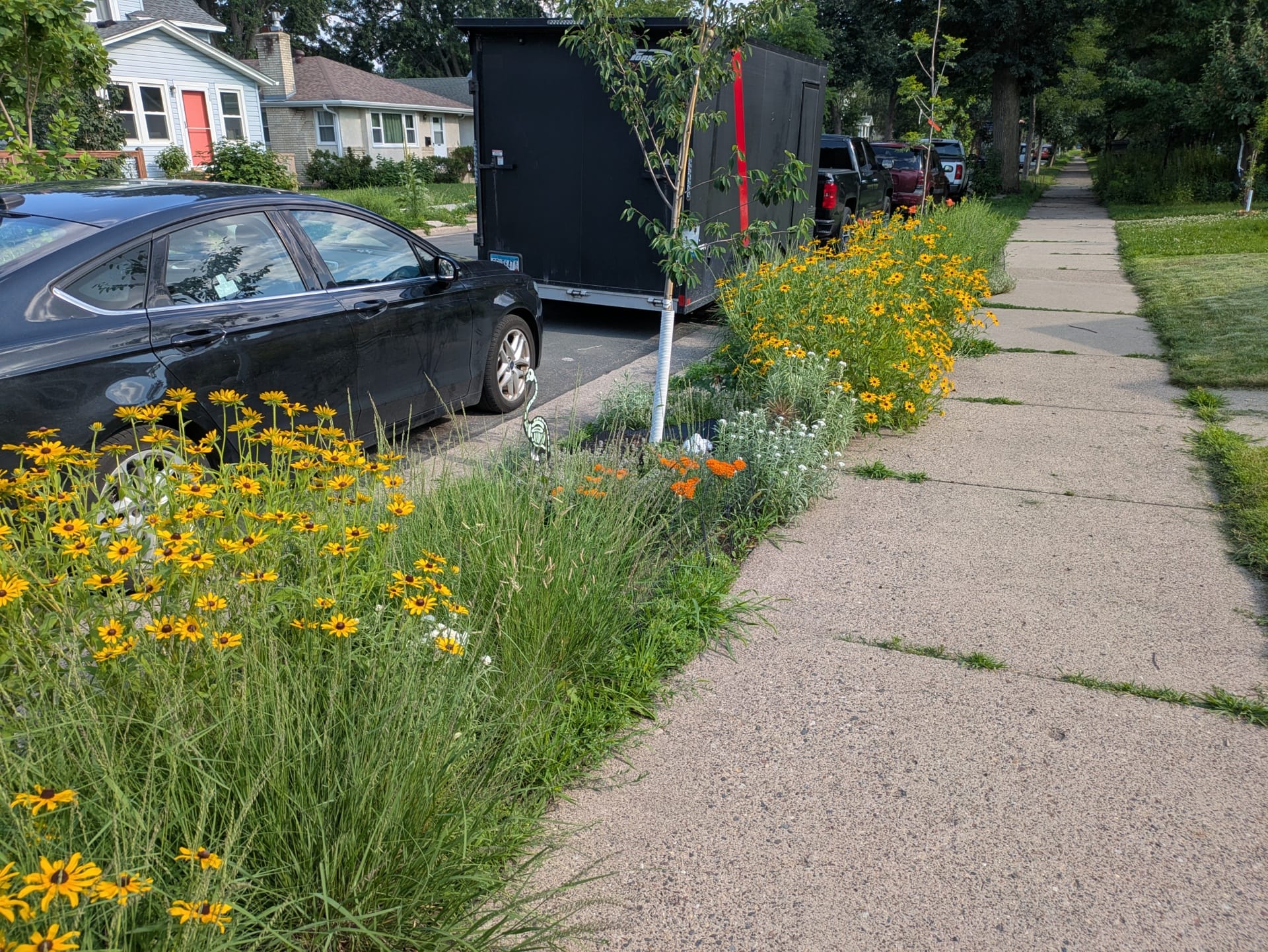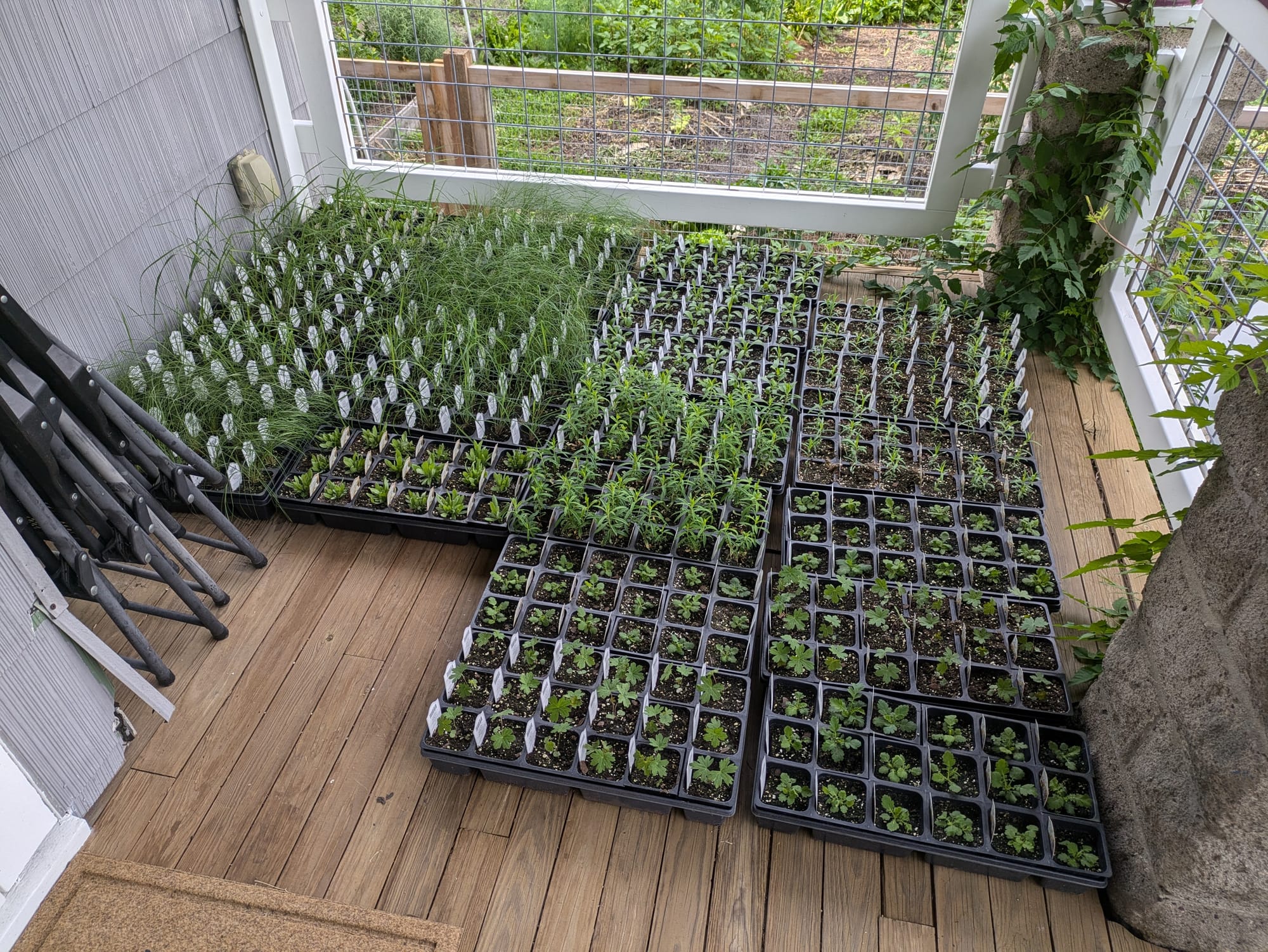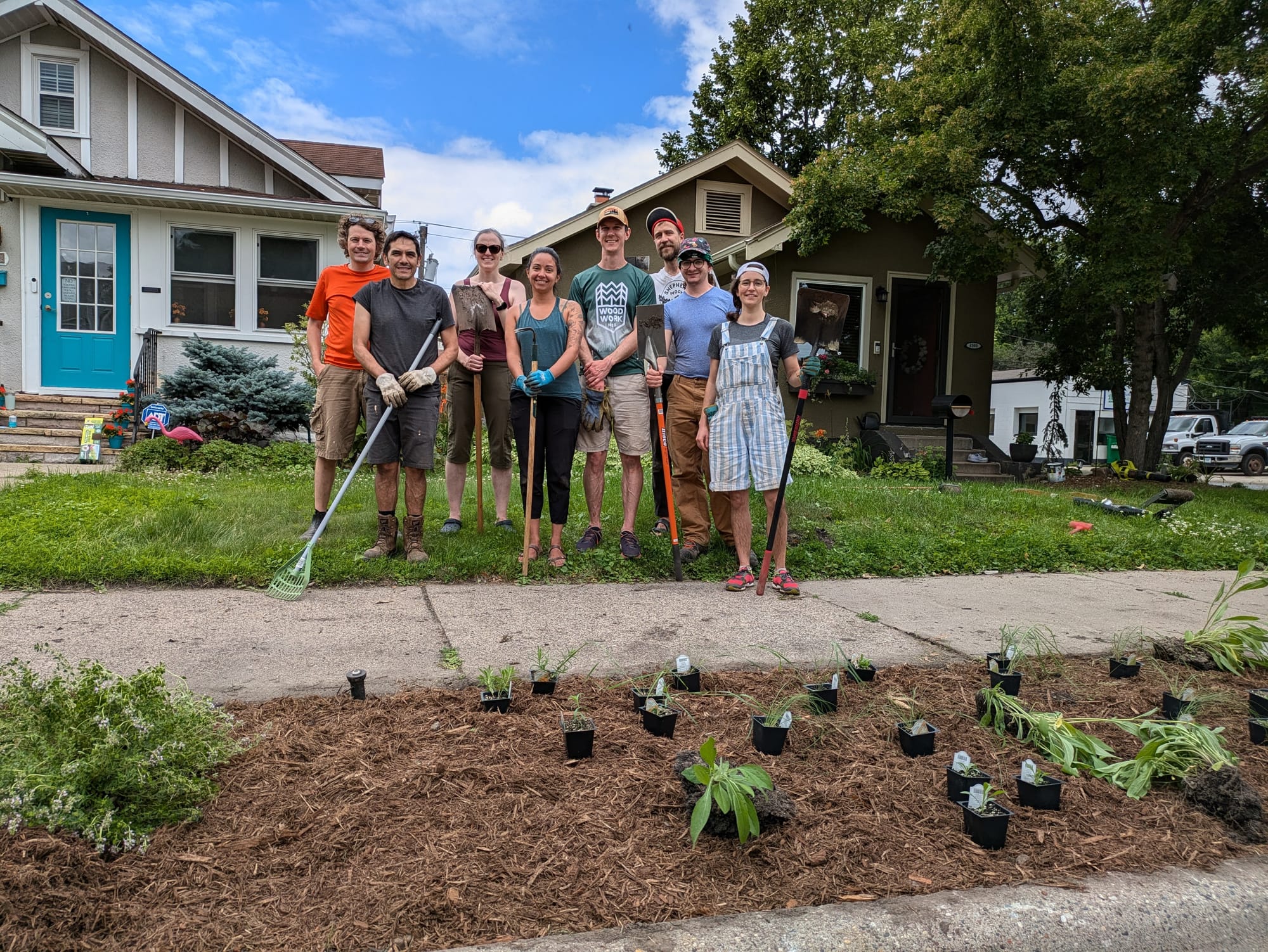🌾 Ian Young wants to help you help your neighbor plant their boulevard
Ian Young doesn’t want to tell you what to do with your boulevard — but, if you have no preference, he’s pretty sure you’re best off filling it with native plants.

Note: This story is free for everyone. For access to everything else, become a subscriber.
Ian Young doesn’t want to tell you what to do with your boulevard — but, if you have no preference, he’s pretty sure you’re best off filling it with native plants. And he thinks he can help. Or at least help someone else help.
Ian tested out the theory on his own block last year, gathering a handful of interested neighbors to pitch in on bulk supplies and labor. And it confirmed his suspicions that such an effort was easy, cost-effective, and, ultimately, totally worthwhile. Now, he’s looking for others in the neighborhood who want to borrow his playbook to lead a similar effort on their own block.
Background
Ian bought his current house near Hiawatha School Park in 2017. He’d developed a cursory interest in gardening as a renter in the preceding years, but that interest kicked into high gear once he became a homeowner. Today, almost every inch of the formerly grassy lot is cultivated in some manner.
As a board member on the Longfellow Community Council, he helped the group secure a $40,000 grant to plant 22 raingardens in the neighborhood. That project went well, but the relatively high cost and limited scale got him wondering how many more could be planted if people banded together to do the work and buy the supplies themselves, in a less formal manner.
Looking for his next project, he got to thinking about boulevards, which he regards as one of a neighborhood’s great wasted spaces. It’s not the type of grass you can use to play catch or have a picnic. The soil is poor and it mounds up over time, causing rain to pool on the sidewalk and turn to ice in the winter. It’s an extra place to mow and takes on a shabby look quickly. At best it’s a toilet for dogs.
On the other hand, it’s a great place for native plants, those unfussy workhorses of the botanical world. They can grow in poor soils and withstand road salt and dog pee. They put the rainwater that washes in from the sidewalk to good use and provide a host of benefits to wildlife. And they look cool – in a wild, rustic kind of way. (There are plenty of other worthwhile things to plant in a boulevard, like cultivated flowers or edible plants, Ian says, but he thinks the native garden is a lower-maintenance alternative that works better for many.)

The work
As far as landscaping goes, planting a native garden in the boulevard isn’t that hard, per se, but it does benefit from a certain economy of scale. Buying enough plants for a half-dozen gardens at once means you can get them much cheaper through a wholesaler. Same for shared rental equipment. And with many hands making light work, it’s possible to plant a bunch of gardens in quick succession. It also helps to have a single leader who can coordinate the effort and put in the orders.
Ian tested the concept on his own block last summer. He put out a round of fliers and e-mailed the block list, ending up with six interested households. He researched options for plant mixes that would stand up to the stressors of boulevard life and stay short enough to not block sight lines. He also made sure the they complied with the city's new rules for boulevard plants, which limit the height and spacing of boulevard gardens to prevent obstruction and safety issues.
Once people chose their plants, he made a bulk order through the local wholesaler Glacial Ridge Growers, which he estimates saved about half the cost of buying retail. He rented a sod cutter from Reddy Rents, and procured mulch and soil removal from Hiawatha Supply. It ended up costing around $200 per household.

The group got together on a summer morning. Within two hours they'd visited each boulevard, cut the sod, dug out soil to bring the garden below sidewalk level, and prepped it with mulch. After a break for Parkway Pizza, everyone returned to their own plot to install the plants. The whole thing took well under a day.
The gardens developed unusually quickly, given last year's optimal growing conditions. Watching them mature in parallel has provided a reliable source of conversation fodder for neighbors, especially when a given plant blooms up and down the block. (Part of the selection process was choosing plants that bloomed at varying times. Butterfly weed and pearly everlasting just had their blooms; asters will start soon.) For his part, Ian sent watering reminders and fielded occasional calls for advice. Now that they're established, he says the plants require hardly any maintenance at all.

Get involved
It wasn't an extraordinary project in scope or scale, and today the gardens, while nice, don't stick out from the many other artfully landscaped boulevards in their vicinity. But to Ian, that's the point: The project was an achievable and affordable way to make a small transformation on the block, and have fun doing it.
So he's compiling the exact steps that his block followed into a training for anyone who'd like to lead a similar effort on their own block, which doesn't require much more than some pluck and basic gardening know-how. He's recruiting for block captains now for what he hopes will be a summer of fresh boulevards next year. If you're interested, you can fill out this form.

Lake Street Lift spotlight: Minneapolis Riverview Lions Club
The Minneapolis Riverview Lions Club is hosting its annual fundraiser on Sunday, September 14, at St. Albert the Great Church from 9-noon. A south Minneapolis chapter of the world's largest service club organization, the Riverview Lions support the work of many neighborhood organizations, including The Lift Garage, Soup For You, and All Square.
Ad series featuring Lake Street organizations and events presented by Lake Street Lift